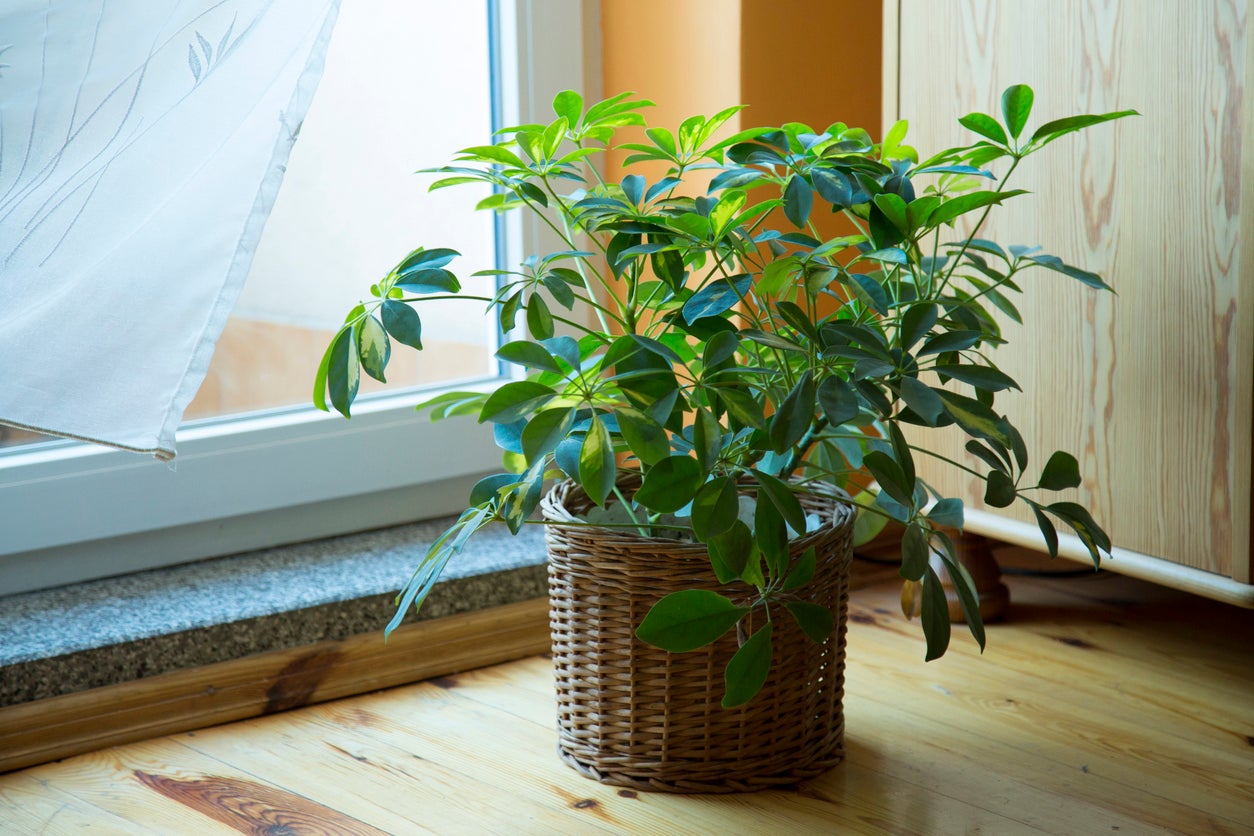
Source www.bobvila.com
Welcome to our comprehensive guide on caring for your indoor umbrella plant. Known for its large, vibrant leaves that resemble an open umbrella, this tropical beauty can add a touch of elegance to any indoor space. Whether you’re a seasoned plant parent or just starting your green thumb journey, this article will provide all the information you need to keep your umbrella plant thriving and healthy. From light and watering requirements to common issues and troubleshooting, we’ve got you covered.
1. Choosing the Perfect Spot
Indoor Lighting
The umbrella plant flourishes in bright, indirect light, mimicking its natural habitat in the rainforests of Taiwan. Place it near a north or east-facing window where it can receive ample bright light without direct sunlight. If your windows don’t provide sufficient natural light, you can supplement it with artificial grow lights.
Temperature and Humidity
Umbrella plants prefer a warm and humid environment, ideally between 65°F to 75°F (18°C to 24°C). Keep the plant away from drafts, air conditioners, or heating vents as direct exposure to fluctuating temperatures can stress the plant and negatively affect its growth.
2. Watering and Soil Requirements
Watering Frequency
Proper watering is crucial for the health of your umbrella plant. Allow the top inch (2.5 cm) of soil to dry out between waterings. Stick your finger into the soil, and if it feels dry at that depth, it’s time to water. Overwatering can lead to root rot, while underwatering causes the leaves to droop and turn brown.
Well-draining Soil
Use a well-draining potting mix to ensure excess water can escape easily. A mix of peat moss, perlite, and compost is ideal for umbrella plants. This combination promotes healthy root growth and prevents waterlogged soil, reducing the risk of root rot.
3. Pruning and Propagation
Pruning for Shape and Size
Regular pruning helps maintain the umbrella plant’s desired shape and controls its growth. Use sharp, clean pruning shears to remove any leggy or overgrown stems. Pruning also encourages lateral growth and helps stimulate new foliage.
Propagating Umbrella Plants
Propagating your umbrella plant is a rewarding way to expand your collection or share cuttings with friends. The most common method for propagation is through stem cuttings. Select a healthy stem, just below a leaf node, and trim it at a 45-degree angle. Place the cutting in water or moist soil until it develops roots.
Table: Nutrient Breakdown for Umbrella Plant Care
| Nutrient | Benefits | Sources |
|---|---|---|
| Nitrogen (N) | Stimulates leaf growth | Fertilizers, compost |
| Phosphorus (P) | Promotes root development | Fertilizers, bone meal |
| Potassium (K) | Enhances overall plant health | Fertilizers, banana peels |
| Calcium (Ca) | Strengthens cell walls | Eggshells, limestone |
FAQs: Common Questions About Umbrella Plant Care Indoor
Q: How often should I fertilize my umbrella plant?
A: Fertilize monthly during the growing season (spring and summer) with a balanced houseplant fertilizer diluted to half strength. Refrain from fertilizing during the dormant period (fall and winter).
Q: Why are the leaves of my umbrella plant turning yellow?
A: Yellowing leaves can be a sign of overwatering or improper drainage. Ensure that the plant is not sitting in standing water and adjust your watering practices accordingly.
Q: How can I increase humidity for my umbrella plant?
A: Increase humidity by placing a tray filled with water near the plant or using a humidifier. Misting the leaves occasionally can also help raise the humidity levels.
Q: Are umbrella plants toxic to pets?
A: Yes, umbrella plants are considered mildly toxic to cats and dogs. Keep them out of reach or consider opting for pet-friendly plants as an alternative.
Q: Can I place my umbrella plant outdoors during summer?
A: Umbrella plants can tolerate some outdoor time during summer, but they should be gradually acclimated to avoid sudden changes in light and temperature. Place them in a shaded area to protect them from direct sunlight.
Conclusion
Caring for your indoor umbrella plant doesn’t have to be a daunting task. By providing the right light, watering, and pruning, you can enjoy the beauty of this tropical foliage year-round. Remember to monitor your plant’s health closely, adjust care practices if needed, and soon you’ll have a thriving umbrella plant that adds a touch of nature’s elegance to your indoor space.